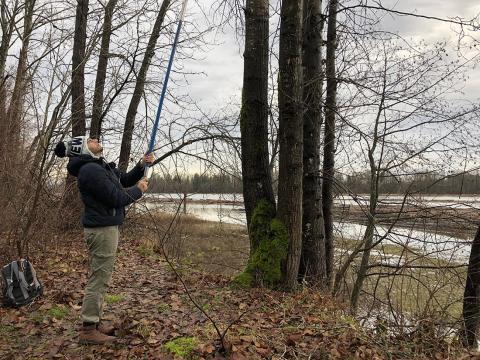
The discovery of a hybrid population of poplar trees in western Wyoming has provided insight into how natural hybridization informs the evolution of many plant species, according to a team led by Penn State researchers. They also said their discovery suggests that genetic exchange between species may be critical for adaptation to environmental change.
The research — which described a novel lineage of hybrid black cottonwood, or Populus trichocarpa, and balsam poplar, Populus balsamifera, — was recently published in Molecular Ecology. It is just the latest study to suggest that natural hybridization has played an important role in the evolution of many plant species, according to team leader Jill Hamilton, associate professor in Penn State’s College of Agricultural Sciences.
“Hybridization between different species is occurring in nature far more frequently than we might have thought — particularly in forest trees. This is not necessarily a bad thing, because it may be a natural mechanism to facilitate adaptation in a changing climate,” said Hamilton, who is director of the Schatz Center for Tree Molecular Genetics at Penn State. “Studies like this one are critical to begin teasing apart how demographic history, gene flow and interaction across varying genomic ancestries have shaped natural hybrid zones to make better predictions for movement of germplasm and climate-assisted forest management in the future.”
Most black cottonwood tree populations exist in wet coastal regions. However, the trees began appearing in arid environments inland and eastward about 800,000 years ago, noted Constance Bolte, postdoctoral researcher for the Schatz Center who spearheaded latter stages of the research. She hypothesized that this movement was likely facilitated by acquiring genetic variation from hybridizing with the balsam poplar trees that allowed them to survive hot, dry conditions.

